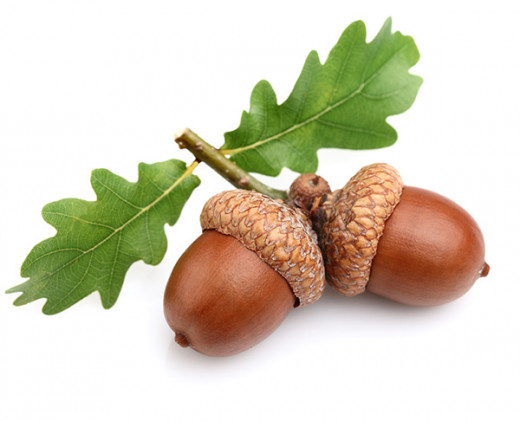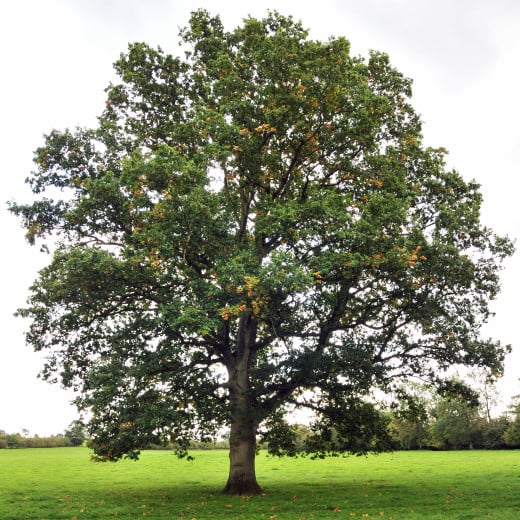Planning a Novel: Designing Interesting Characters

Starting from an Acorn
Don't worry, I'm not going to ask you to draw anything (unless that's your thing, in which case go right ahead) - the picture is simply illustrating character development. We're going to take a method I like to call 'Starting from an Acorn', and as we all know, from acorns mighty oaks grow.

Your Acorn
The 'acorn' part of this method of character development is a simple, one-sentence description of your character. You should aim to sum up three main points:
- Who your character is
- What their main conflict in the story is
- How they resolve their main conflict
Who your character is:
When describing who your character is, don't use any names. This is the key idea behind this style of development: names are boring, and using them will only result in boring characters. If you followed by "Planning a Novel: Fractal Methods" hub, you will be used to writing only in descriptions and avoiding names like the plague. Good examples include things like: "a clumsy trapeze artist", "a shy politician", and "a werewolf computer programmer".
What their main conflict is:
The main conflict that your character faces need not be the ultimate Big Bad in your story - for example, if your werewolf programmer is facing off against a vampire cheerleader, then their conflict need not be the vampire - it could be their sense of insecurity, which means they struggle to attend the final battle. Your character's main conflict should feed into who they are, and should inform you when it comes to writing them. Good examples include things like "a shy politician, who is afraid of the dark".
The resolution to their conflict:
Each good story involves the main character having some sort of resolution to their conflict, even if that resolution is the conflict completely absorbing them. So it's important in your acorn to think about how your main character is going to resolve the conflict you've given them. A shy politician afraid of the dark might utilize glow in the dark paint at a moon-light conference. Your insecure werewolf might learn that true beauty is on the inside. Play around with a couple of resolutions, don't be afraid of cliché, and above all be creative!
The Roots
All acorns grow into oak trees, and all oak trees have roots. This is the next stage in character development: taking your acorn and letting it put down its roots.
We're using 'roots' in quite a literal sense, as you'll come to see.
The roots of your character oak tree will be the background to your character - everything from family history (no family tree puns, please) to how exactly they became afraid of the dark.
Start by explaining exactly how they got their main conflict. Your insecure werewolf might once have been teased about his excess body hair around the full moon. From there spiral outwards - how does their main conflict interfere with their family life, with their professional life, with how they interact with other characters? Describe in detail your character's relation to every other character in the plot, even if they only meet once - a passing comment in the school corridor to your werewolf might have tons of backstory to go with it.
The importance of backstory is not for you to write it all down then dump it on your reader at some point towards the middle of the story. Backstory might never even make it into the final draft - it is there to inform your decisions about how the characters interact with each other and with the situations they've been thrown into.
The Trunk
Each oak tree has a trunk, no matter how small and fragile or big and immovable. The 'trunk' of your character can be seen as what holds them up - their values, wants and fears. It is also a representation of your character in the 'now'; if roots are backstory then the trunk is current story.
Start by detailing your characters values, what makes them who they are. Your werewolf might value efficiency. Your shy politician might really like people who are punctual. You won't know until you start detailing. And detail is key - write down every little thought you have, no matter how insignificant. Don't be afraid to go back to the roots stages, as well, if you discover more backstory whilst writing in the trunk of your character.
Move onto their wants and fears. Refer back to your acorn; what is your character's main conflict? Explain it a bit further. Explain any minor conflicts they may have that relate to the major conflict. Explain what stops them resolving their conflict straight away and you ending the story in under a page. Detail, detail, detail.

The Leaves
Leaves are important to trees - they make the tree instantly recognisable, as every tree has different shaped leaves. See where I'm going with this? You will...
This stage is all about ancillary details; everything from what your character looks like, what they wear, through to what subjects they studied at school. This is what your reader will most likely interact with, as it's the detail you're most likely to include.
I find a spider diagram is useful here, if you're not sure the direction in which to go - start with your acorn in the middle, then draw lines out to different aspects of your character. Write everything down, even if they contradict, and don't forget - detail!
Pruning
All trees need pruning, if not they grow into unruly and uncontrollable things. The same is true for your character - remember when I said to write down everything, even if it contradicts or doesn't seem like it totally fits your character? This is where you're able to go back through and prune down that information.
Take a nice red pen and start crossing through things you think you're unlikely to include, but don't make them illegible (you never know when you'll need them again, perhaps in another project). Pruning is a personal exercise and only you will know when you've done enough of it to have a workable character.
Good luck, and happy writing!



